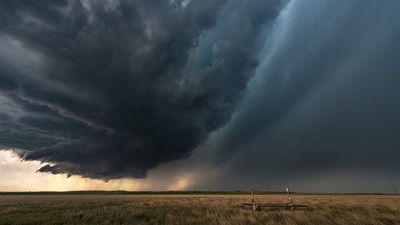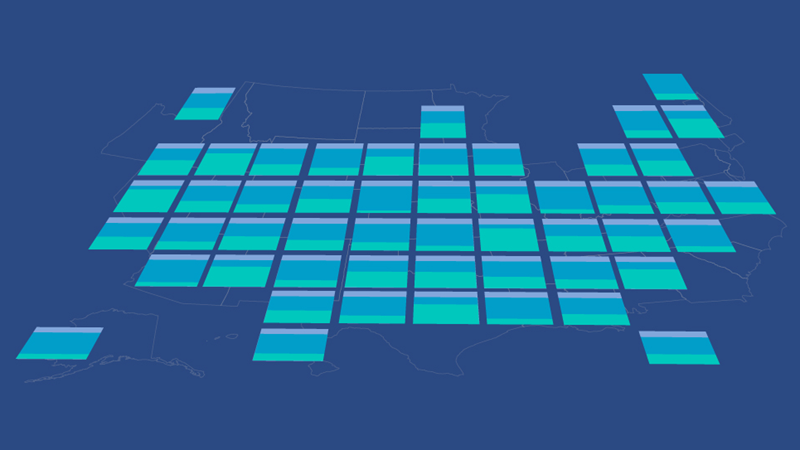States Tread Carefully With Budgets as Gaps and Revenue Uncertainty Loom
Slowing revenue, rising costs, and federal funding questions force some state legislatures into overtime to decide on spending for new fiscal year

To say it’s been a challenging budget year for states is probably an understatement. In a time marked by slowing revenues, rising spending pressures, and big budget gaps in some states, passing a balanced budget was already going to be difficult. But doing so while questions about the fiscal impact of potential federal policy changes remained unanswered led to prolonged budget battles in nearly two dozen statehouses, dragging negotiations into late June—and leaving legislatures in North Carolina and Pennsylvania still at an impasse as of early July, despite the start of a new fiscal year.
As late as June 16, only about half of states had enacted a budget. Among those that did, the approach to fiscal year 2026 was one of extreme caution, as Congress continued to debate sweeping federal spending and policy changes, with a package signed into law July 4 that will significantly alter how much federal funding states receive.
To keep some fiscal flexibility in 2026, policymakers are adding to reserve funds and cutting or delaying some spending. A few states have set aside money to be used in the event of federal funding cuts. Some are boosting other revenue streams by raising targeted taxes or fees to meet growing costs, particularly those related to Medicaid, or to help fill anticipated deficits. But just how much flexibility they’ll need remains hazy, as certain economic indicators continue to perform better than expected. An anticipated slowdown in consumer spending did not materialize in fiscal 2025, and recession expectations have softened. In fact, an analysis of preliminary data shows that fiscal 2025 revenues in more than half of states are running ahead of projections.
“Our revenues continue to hold up above what we expected, and we remain in a strong financial position,” Virginia Secretary of Finance Stephen Cummings said.
He added that officials in his state are closely monitoring economic data for signs of weakness related to tariffs, federal workforce cuts, or federal grants but have yet to see any meaningful shifts. “A lot of these balls are still up in the air and will be evaluated as they are resolved.”
This uncertain climate has created a kind of fiscal purgatory as states wait for a blow that may—or may not—be coming.
Late budgets and overtime sessions
Citing such factors, revenue forecasters in more than a dozen states have lowered expectations for the coming year—adding more weight to lawmakers’ already difficult balancing act. And a number of state legislatures went into overtime before reaching budget deals.
As of mid-June, 20 state legislatures had either passed their budget late or still hadn’t passed a budget, according to a review by The Pew Charitable Trusts. Among those who passed theirs on time, 20 had a fully enacted budget, while seven were waiting for a governor’s signature. (Three had enacted biennial budgets in 2024, which run into 2026.)
Though it’s not unusual for a few states to miss their own budget deadline in any given year, the reasons are typically singular to that state. But a higher volume of late budgets tends to signal some shared problems.
This year, the group of states with late or stalled budgets is notable both for its size and for its inclusion of a few states that rarely miss their deadlines. Many legislatures held special or extended sessions in 2020 to respond to the pandemic. But outside of that historic year, it has been a decade since Florida passed a budget late. Mississippi’s last tardy budget was in 2017.
And the overtime work might not be behind lawmakers, as officials in several states—including Colorado, New Mexico, and Washington—have signaled that special sessions may be needed in response to the federal budget.
Holding the line
In this unsettled environment, many officials protected their state’s rainy day fund and cash reserves—even in the face of deficits. Tasked with closing a multiyear budget gap, Washington state lawmakers opted for targeted tax hikes, including a new capital gains tax bracket and expanding the state’s sales tax to certain services, rather than lean on reserves.
“That was really important—we needed to hold the rainy day fund,” said K.D. Chapman-See, director of Washington’s Office of Financial Management. “In terms of contingency plans, it’s our biggest placeholder.”
Meanwhile, Indiana and Maryland lawmakers turned to a mix of spending cuts and tax increases to resolve their multibillion-dollar deficits while keeping reserves intact. Legislators in Alaska, where shrinking oil revenue prompted forecasters to significantly lower revenue expectations, opted for cuts to close the deficit rather than dipping into the state’s reserves.
Before signing the final bill, however, Alaska Governor Mike Dunleavy (R) used his veto power to make further cuts, calling for more restraint amid economic uncertainty. He wasn’t the only governor to do so. At least two others—in Virginia and in Hawaii—also vetoed targeted spending initiatives, citing potential changes in federal funding and a need for fiscal prudence.
Iowa was one of the few that did dive into savings, using budget reserves and the state’s Taxpayer Relief Fund to cover a portion of a projected $900 million budget gap.
In cases where spending is on the rise, the increases are driven primarily by the higher cost of existing services, rather than investment in new programs, particularly in health care. Nearly every state had to respond to rising Medicaid costs this year, even as enrollment has declined. Medicaid is a joint federal and state program.
To afford the higher costs, some states turned to tax revenue. In Illinois, where forecasters had lowered the state’s revenue outlook by more than half a billion dollars, lawmakers raised taxes on tobacco products and sports betting and instituted a new tax on short-term rentals to help fund the state’s $55 billion budget for fiscal 2026.
Final thoughts
Legislative sessions began this year with states facing more widespread budget stress than at any time since at least 2020—a reflection of the current uncertainty and the comedown from a period of historically high revenue growth in 2021 and 2022, when states received a historic level of federal pandemic aid. As fiscal 2025 comes to a close, Pew’s analysis of preliminary data from the Urban Institute shows that nominal revenue growth in states is on pace to total 3.7% above the prior fiscal year, relatively flat growth after taking inflation into account.
But states have also benefitted from prudent forecasting—for the most part, fiscal 2025 budgets accounted for minimal revenue growth and less spending. By Pew’s count, 35 states are on track to take in more revenue than expected, an extra cushion for what’s expected to be an even bumpier road ahead.
Many think they’ll need it.
“With all of these budget headwinds,” Alaska state Senator Lyman Hoffman (D) told local media after the budget vote, “it's clear to me that the decisions next year will be more difficult than the decision we have made today.”
Liz Farmer works on The Pew Charitable Trusts' Fiscal 50 project.









